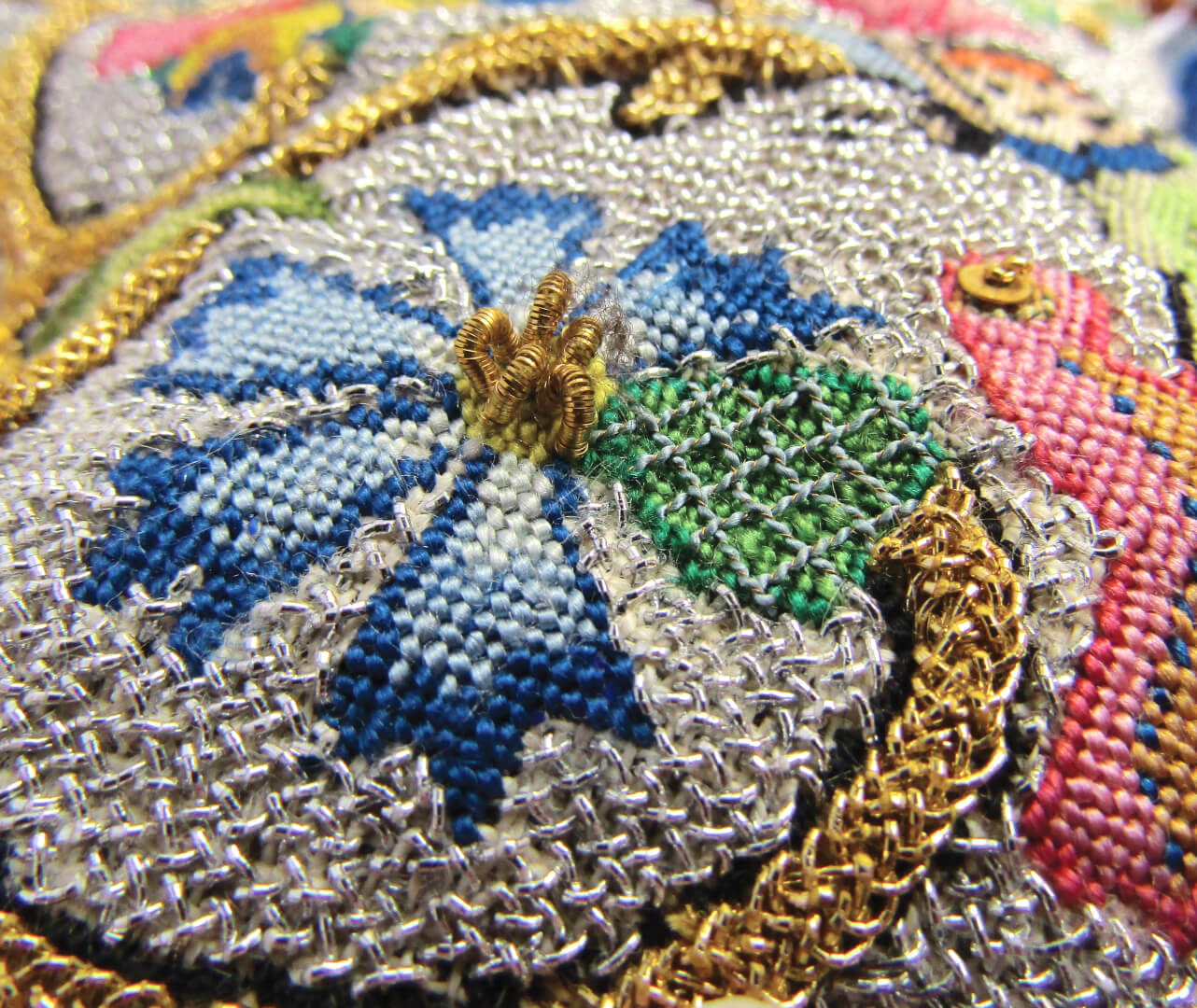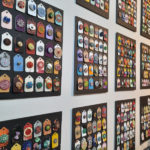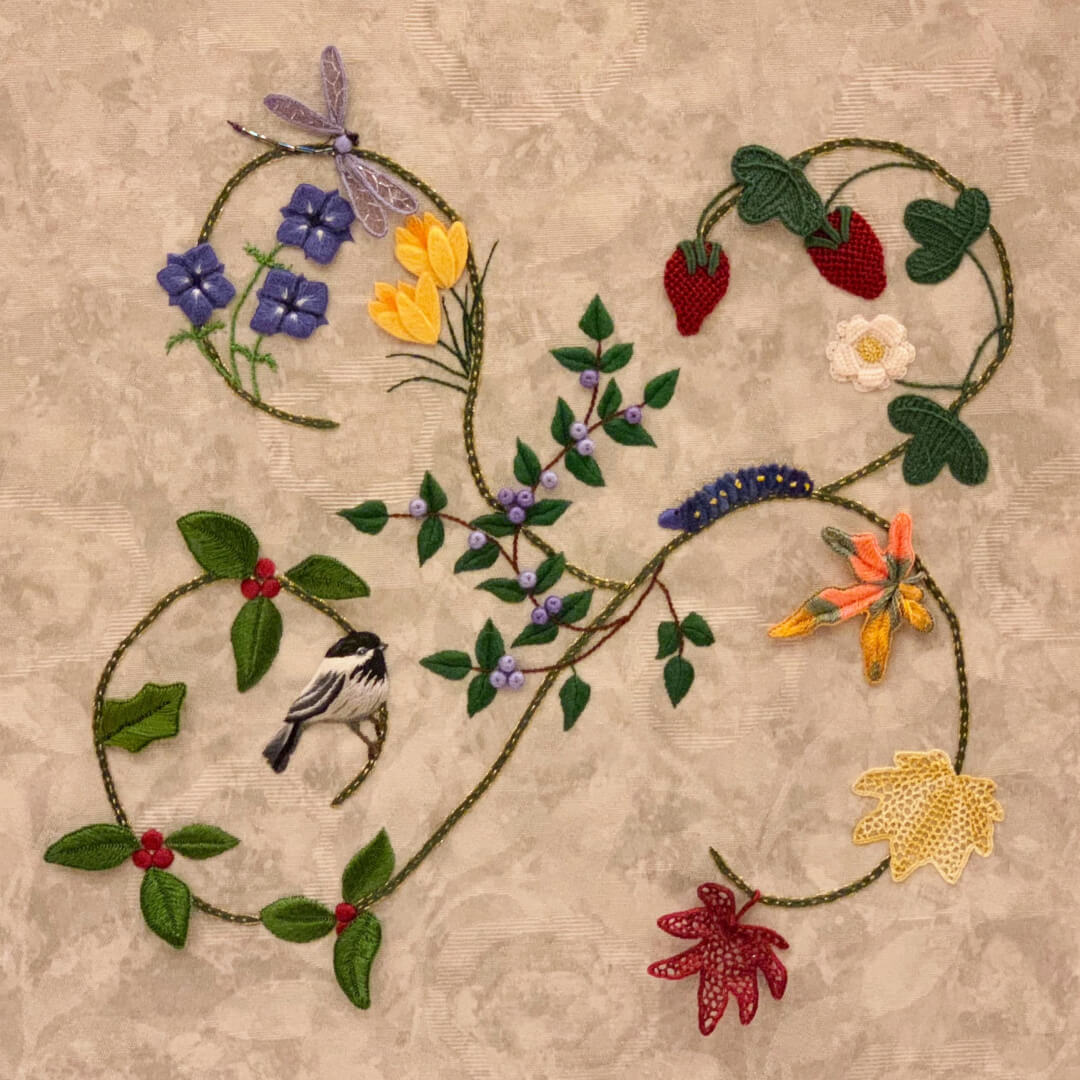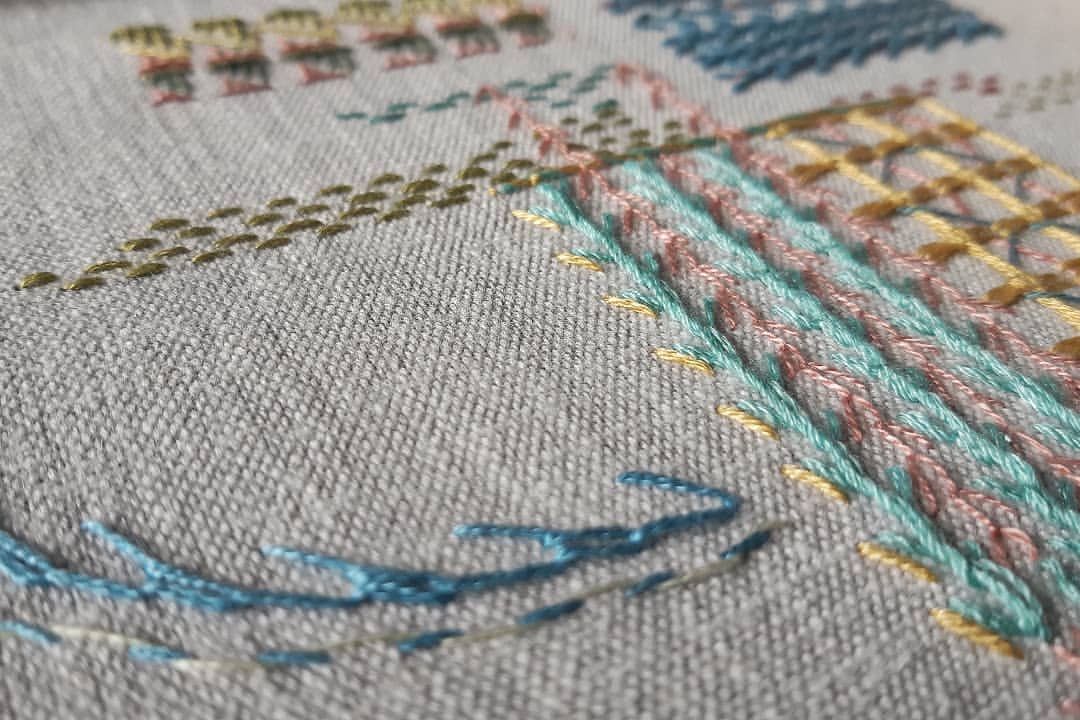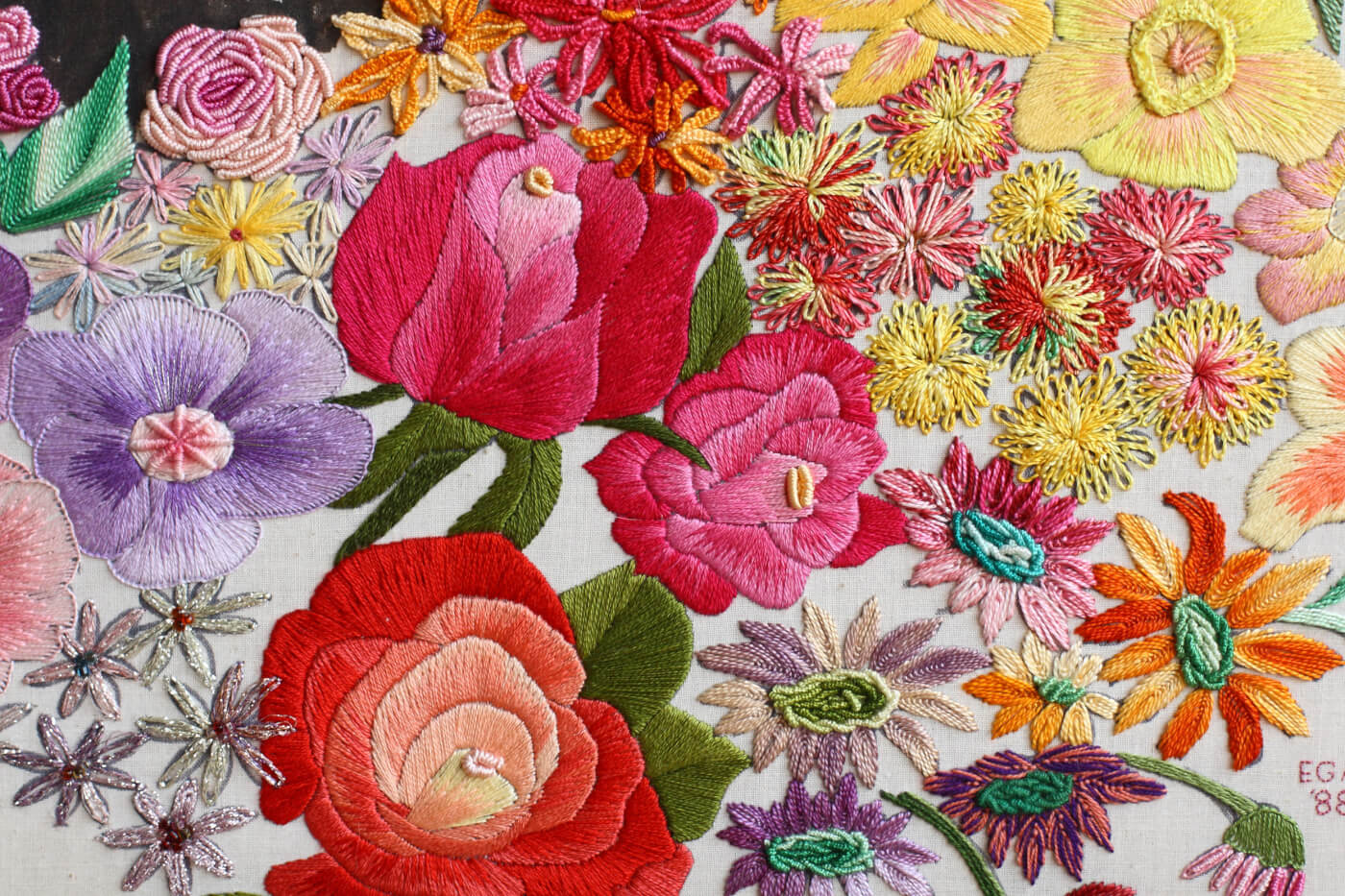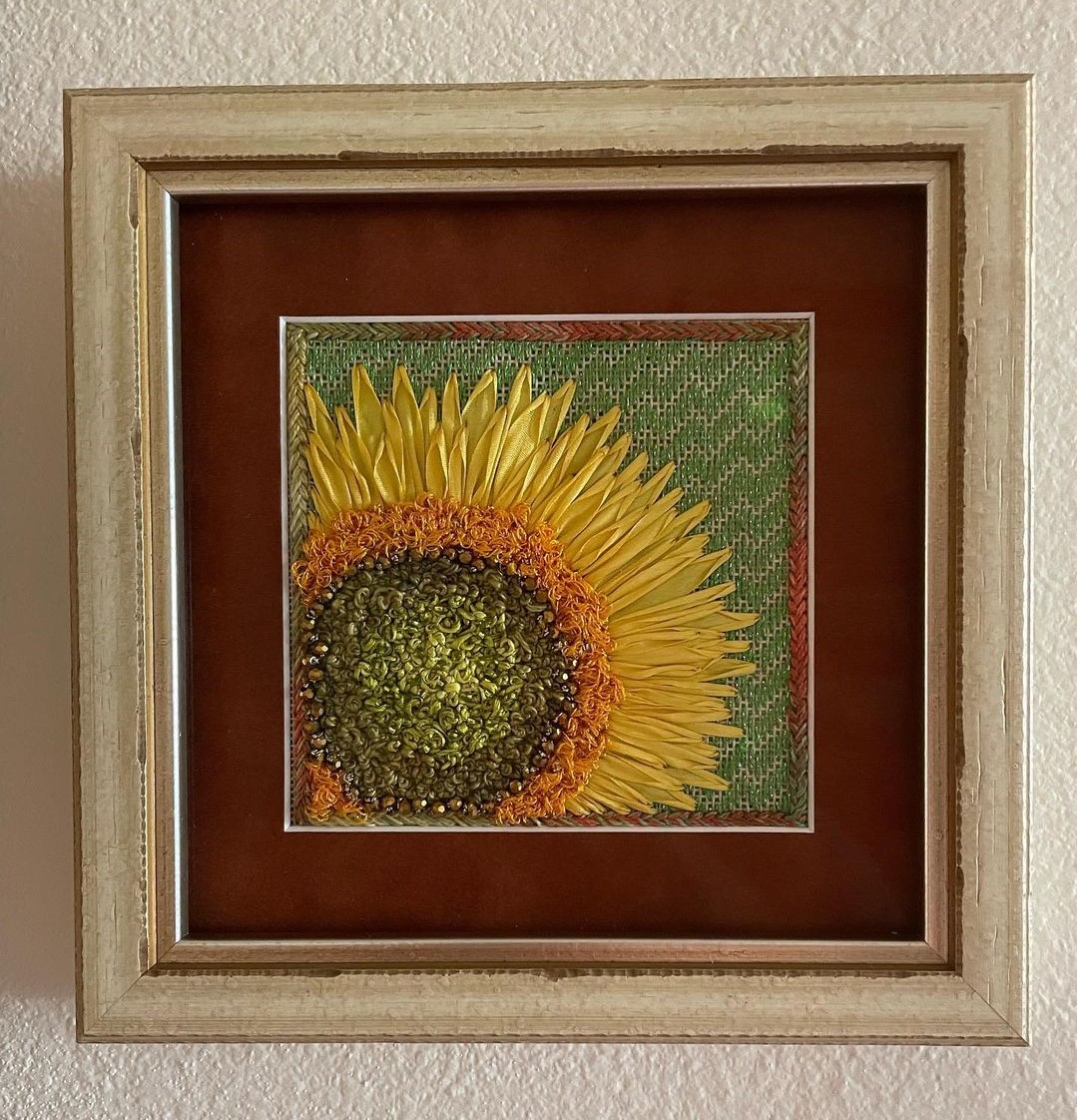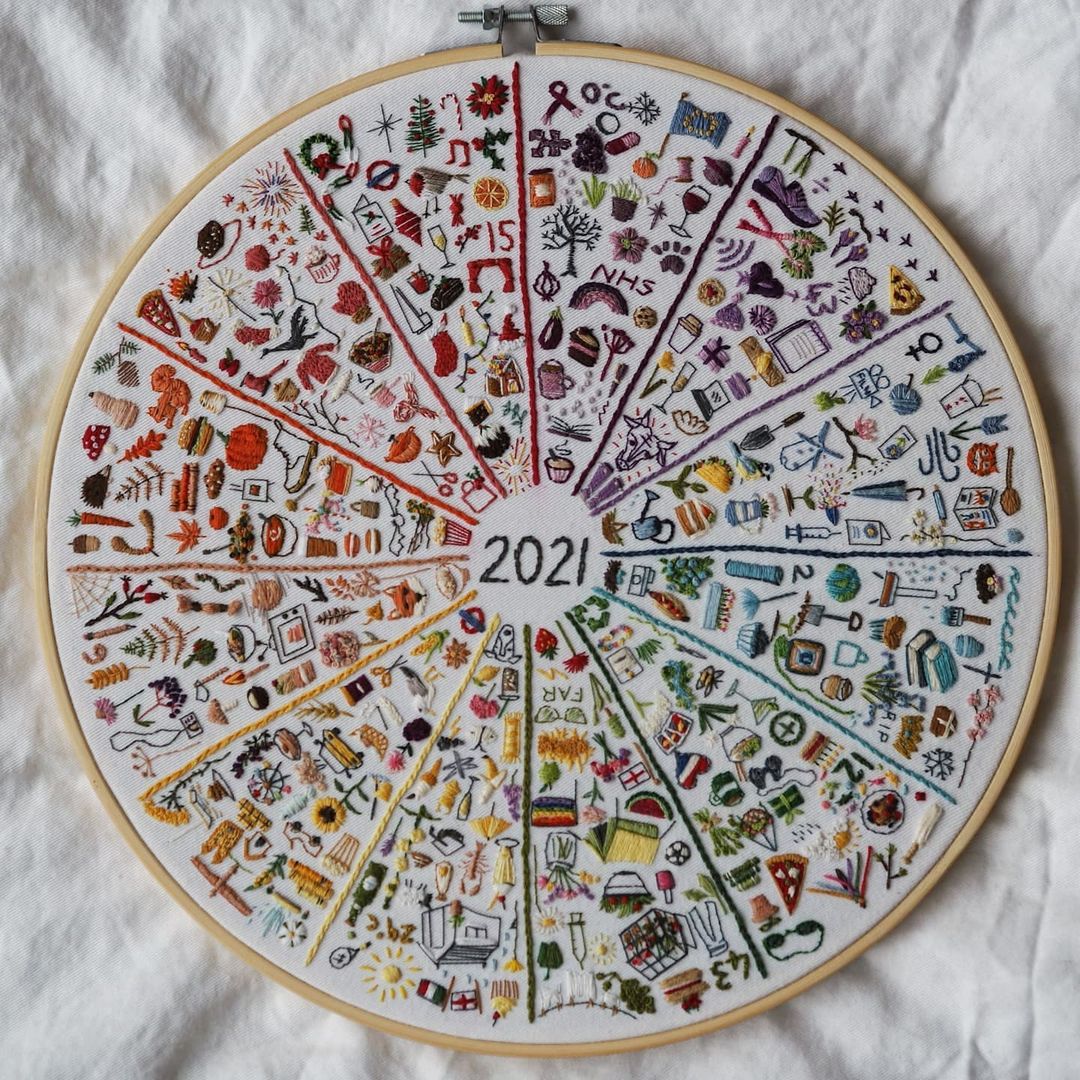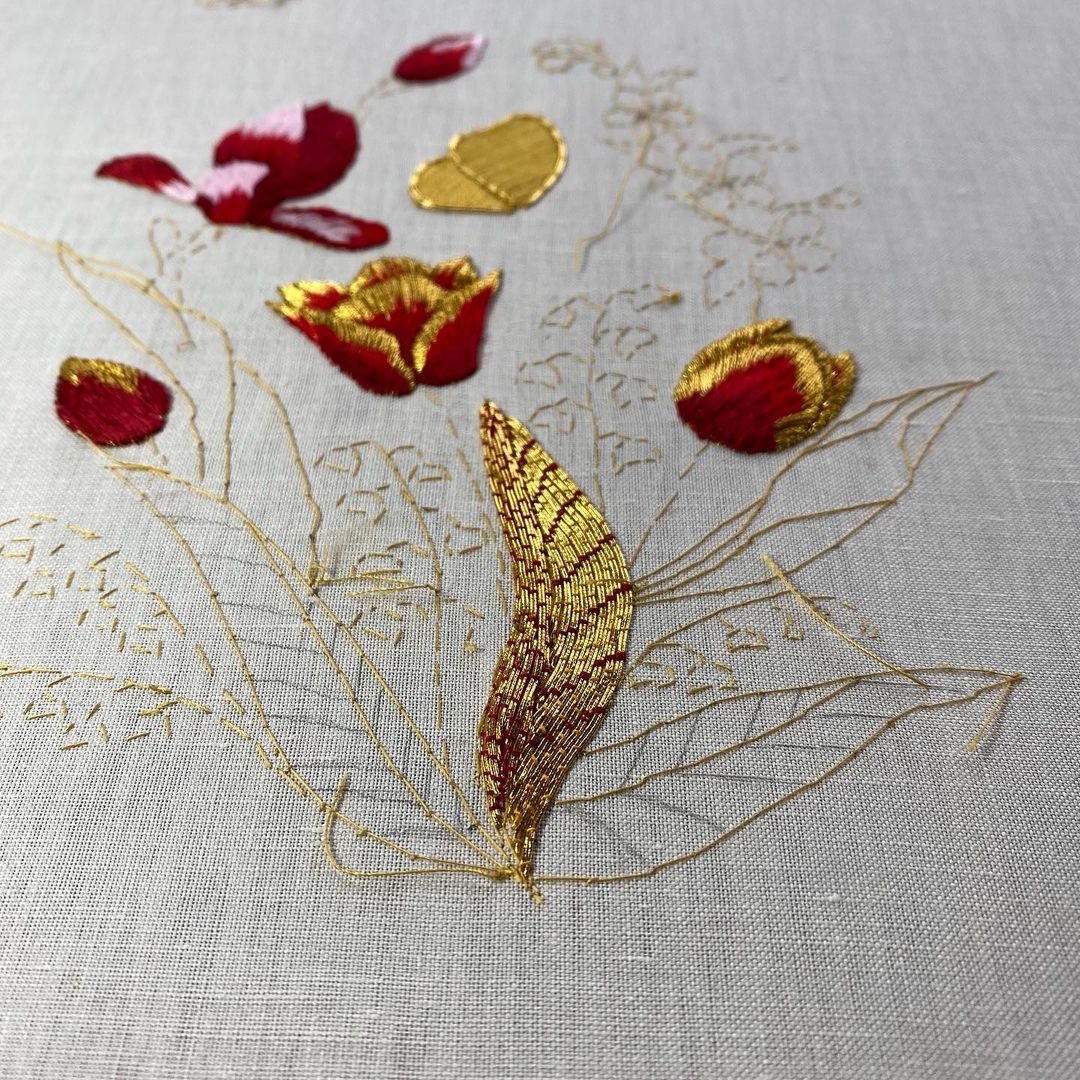Technique: Bojagi
Place of Origin: Korea
Earliest known date: 57 BCE–668 CE
History: Bojagi dates back to the Three Kingdoms period (57 BCE–668 CE), as documented in historical records like the Samguk Sagi. However, most surviving examples originate from the Joseon dynasty (1392–1910).
Bojagi (also known as pojagi) has remained an integral part of Korean daily life for centuries. Bojagi, (보자기) originates from the words “bok,” the Korean word for luck, and “bo,” which translates to happiness or fortune. Altogether, bojagi translates to a wrapping or covering cloth and can be transcribed as “the wrapping of luck.” Koreans believed that the act of wrapping objects protected them with good luck.
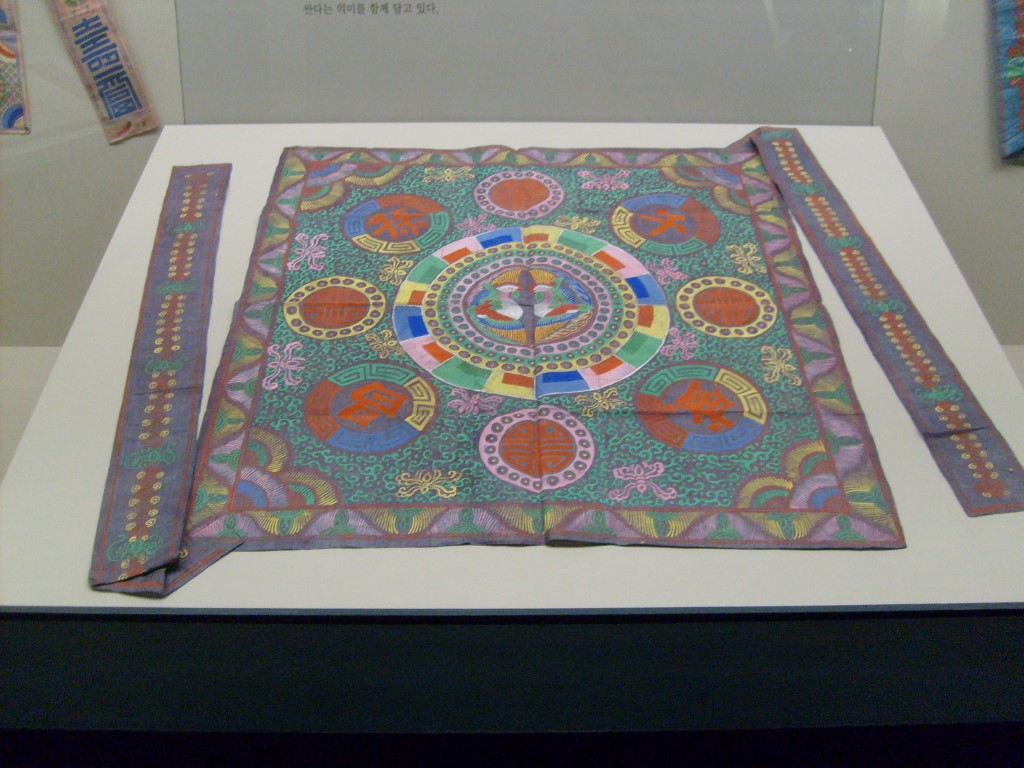
Bojagi serve as versatile wrapping cloths for transporting, storing, and protecting items ranging from everyday goods to sacred objects. Embraced by all social classes—from royalty to commoners—bojagi were crafted from materials such as silk, ramie, hemp, and cotton. The Joseon dynasty’s Confucian ideals, emphasizing frugality and resourcefulness, greatly influenced the creation of bojagi.
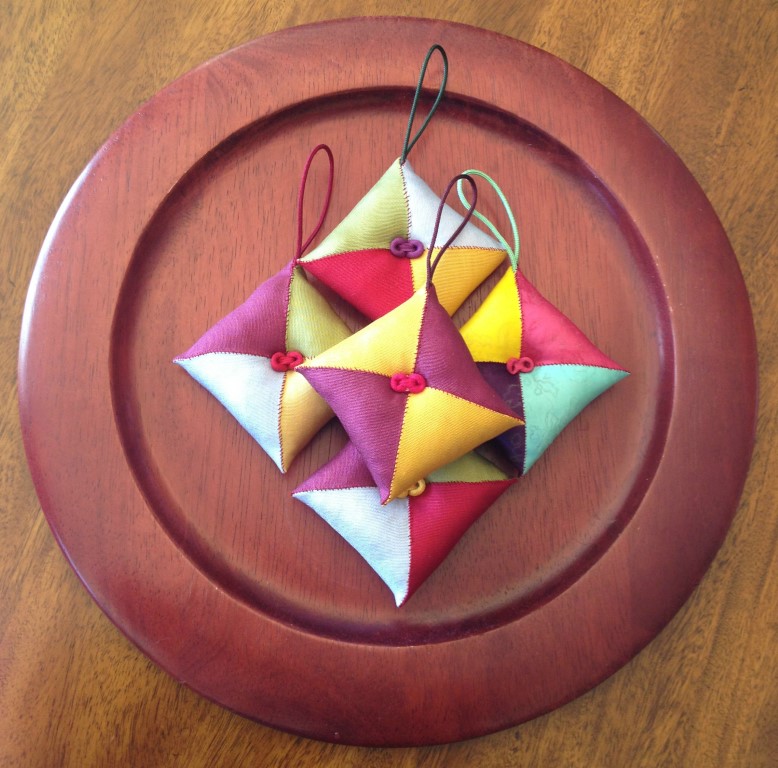
Hanbok, the traditional Korean clothing, features round-shaped sleeves. After crafting hanbok, Korean women would often have lots of leftover fabric scraps. They would repurpose these fabrics into bojagi, transforming necessity into an art form. This practice not only showcased their creativity but also adhered to the era’s values of thrift and ingenuity. Royal bojagi, known as gung-bo, were made from luxurious silk and adorned with intricate embroidery to signify status and reverence for the objects they wrapped.
Beyond its functional origins, bojagi is a medium for storytelling, with patterns and colors representing wishes for happiness, prosperity, and longevity.
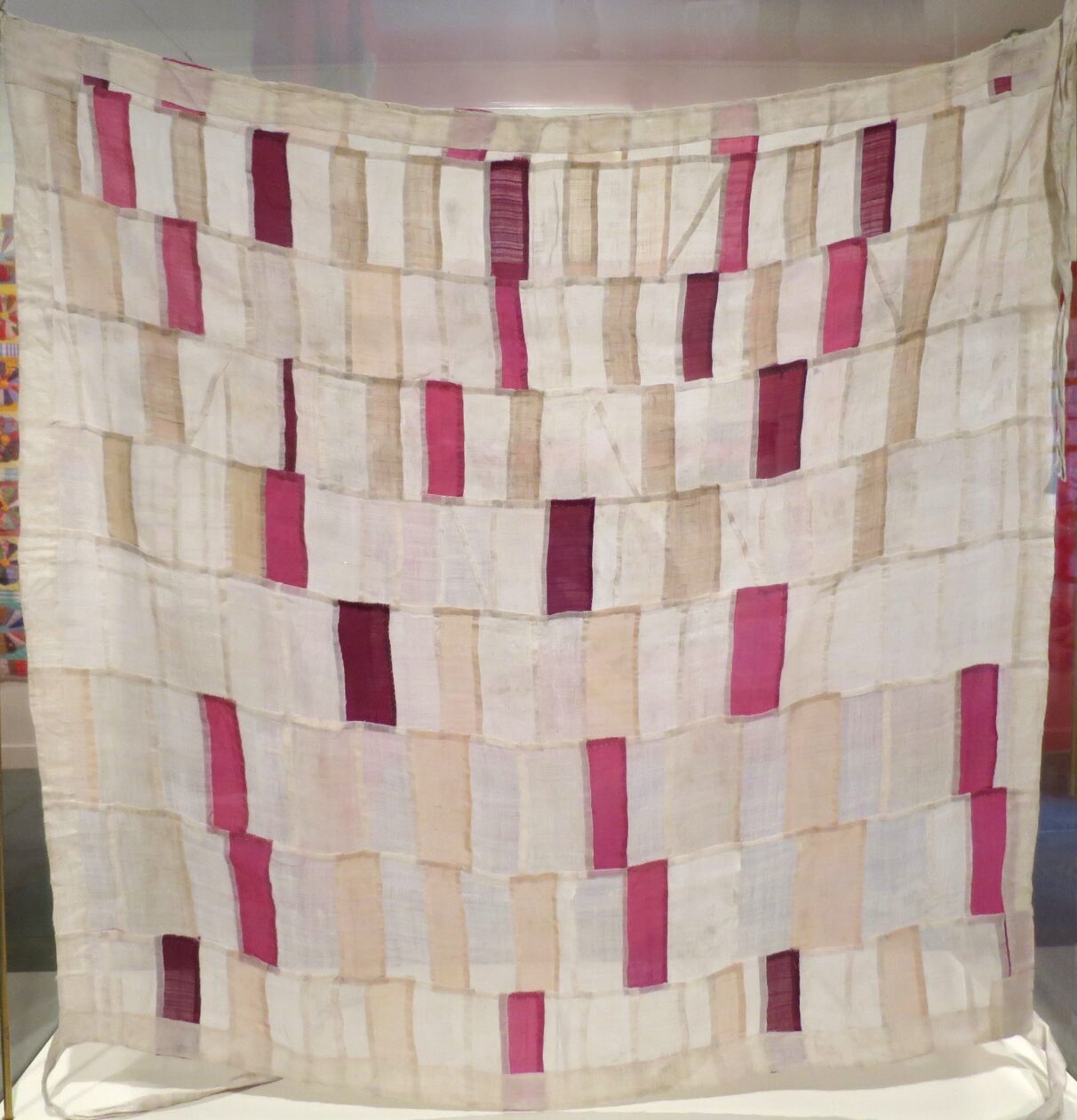
Materials: The choice of materials in bojagi reflects both availability and the cloth’s intended use. Silk was the material of choice for aristocratic and ceremonial bojagi, prized for its delicate sheen and luxurious feel. Nubak bojagi, or quilted wrapping cloths, were often made of silk and layered for additional warmth, making them ideal for winter use. Ramie and hemp were widely used among commoners for their durability and ease of care, especially for everyday tasks like wrapping food or carrying goods. Cotton, introduced to Korea later in history, became a popular material due to its affordability and ability to hold vibrant dyes. These fabrics were often dyed using natural pigments derived from plants, creating rich colors like indigo, saffron, or madder red. Each material not only served a practical function but also conveyed symbolic meanings, with colors and patterns reflecting the occasion or the wishes of the maker.
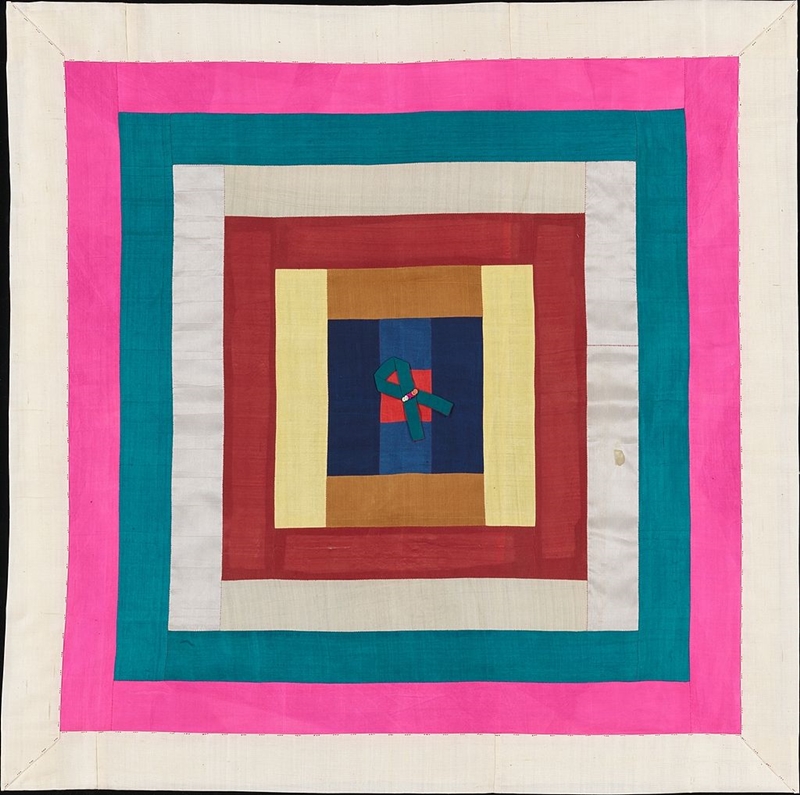
Techniques and Stitches: Traditional bojagi are square or rectangular in shape (depending on their use for things such as bedding, home decor, kitchen towels, tableware, curtains, etc). Crafting bojagi involves meticulous techniques that balance form and function. Patchwork, known as jogakbo, is a prominent method where small fabric scraps are pieced together to create larger cloths. This approach exemplifies the resourcefulness inherent in making bojagi, turning remnants into cohesive, artful textiles. A unique feature of jogakbo is the improvisational nature of its construction, where makers freely combine colors and shapes, creating one-of-a-kind compositions.
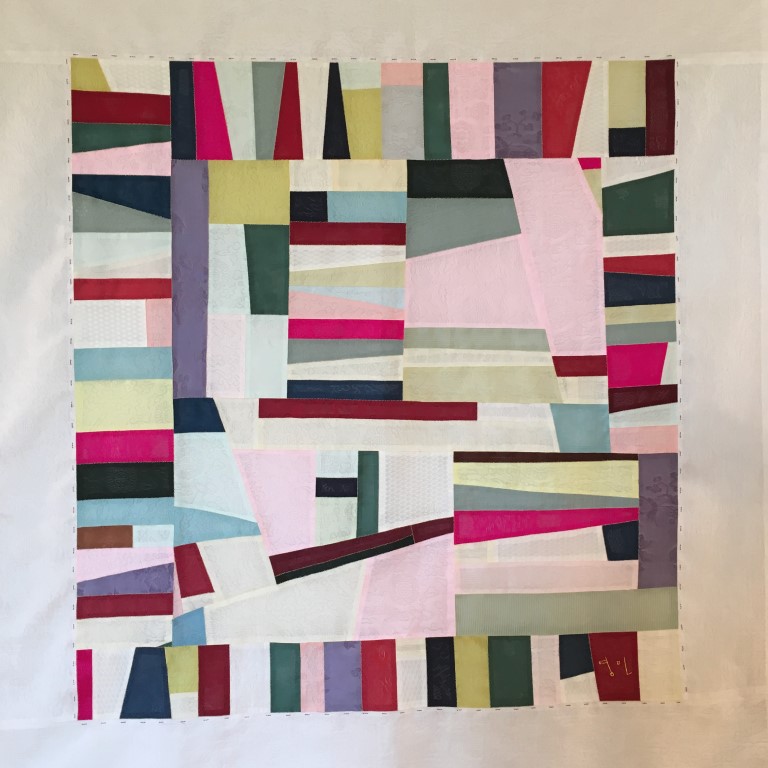
Another significant technique is layering, used in nubak (quilted bojagi), which involves sandwiching batting between layers of fabric for added texture and warmth.
Embroidered bojagi, known as subo, were stitched for special occasions such as weddings or celebrations. Intricate designs are added using satin stitch, stem stitch, or couching techniques. These methods transform the cloth into a canvas for storytelling, where each motif adds layers of cultural meaning and personal sentiment.
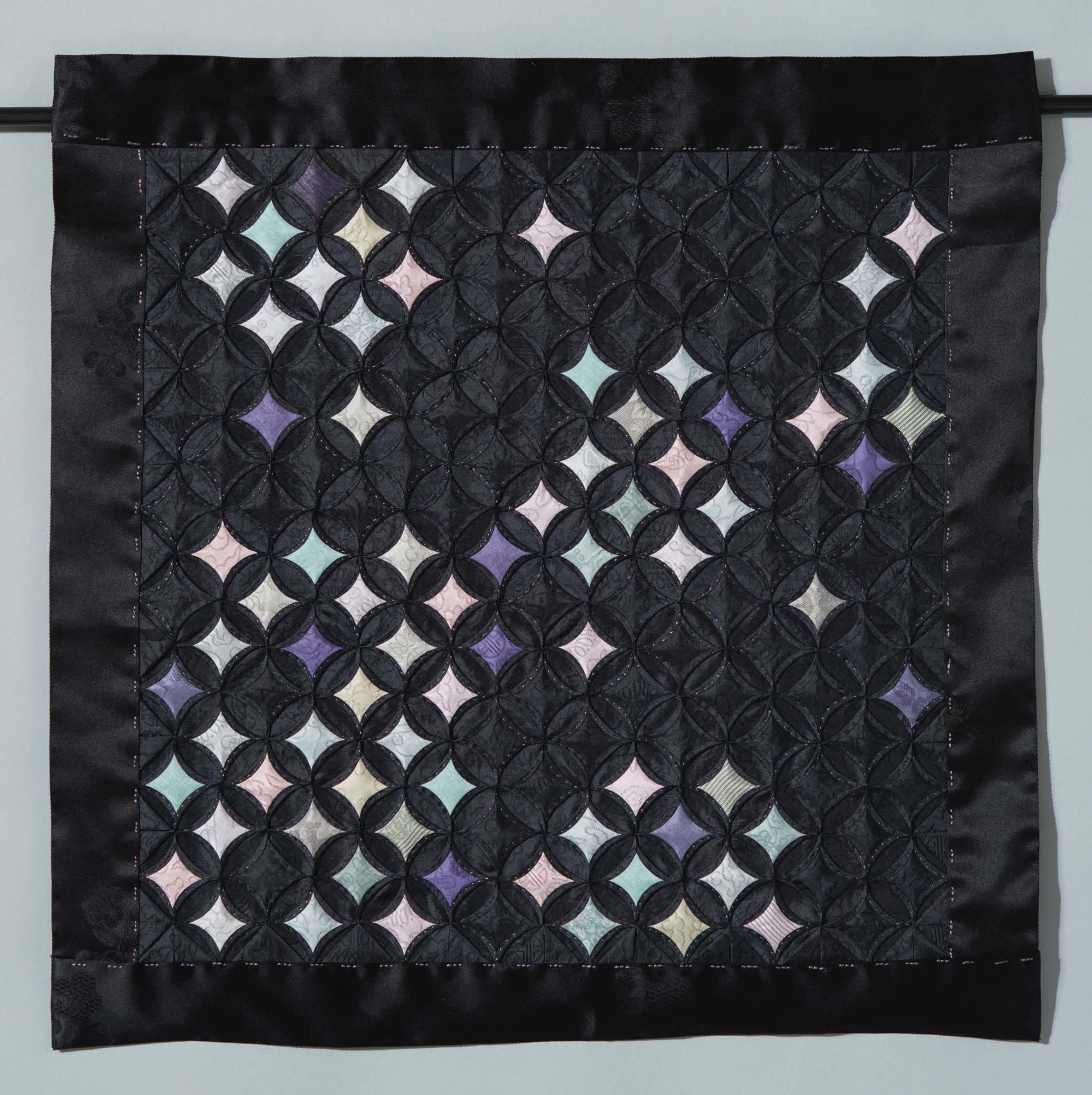
Bojagi employs specific stitching techniques that are both functional and decorative. The gekki (or gamchi) stitch, a triple-stitched seam, is commonly used to join fabric pieces, resulting in a flat, durable seam that contributes to the cloth’s distinctive “windowpane” appearance. This technique creates a flat and smooth finish on both sides, making the cloth reversible—an essential quality for cloth that may wrap an item in various ways.
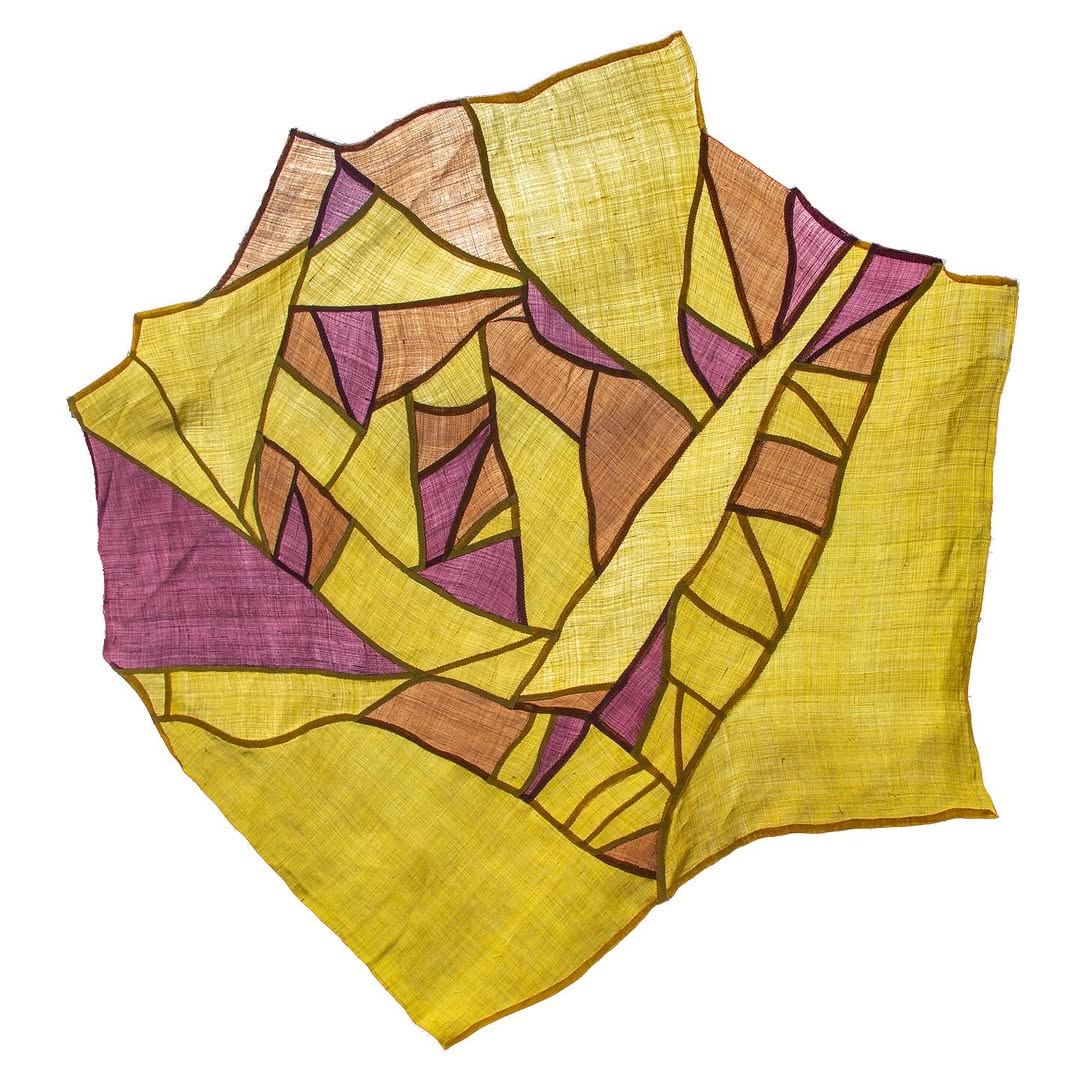
Another common stitch is the whipstitch, used for embellishments and securing small, intricate sections. While simple in principle, these stitches, require precise execution and patience when working with delicate materials like silk. Often, makers use contrasting thread colors, adding a playful or sophisticated element to the final design. The stitching itself is symbolic, representing the careful balance of strength and beauty—a hallmark of Korean textile traditions.
Motifs:
Bojagi motifs carry symbolic meanings. Geometric patterns, such as squares and triangles, dominate jogakbo, reflecting the improvisational style and the interplay of colors and shapes. These patterns often carry philosophical meanings, such as balance, harmony, and protection.
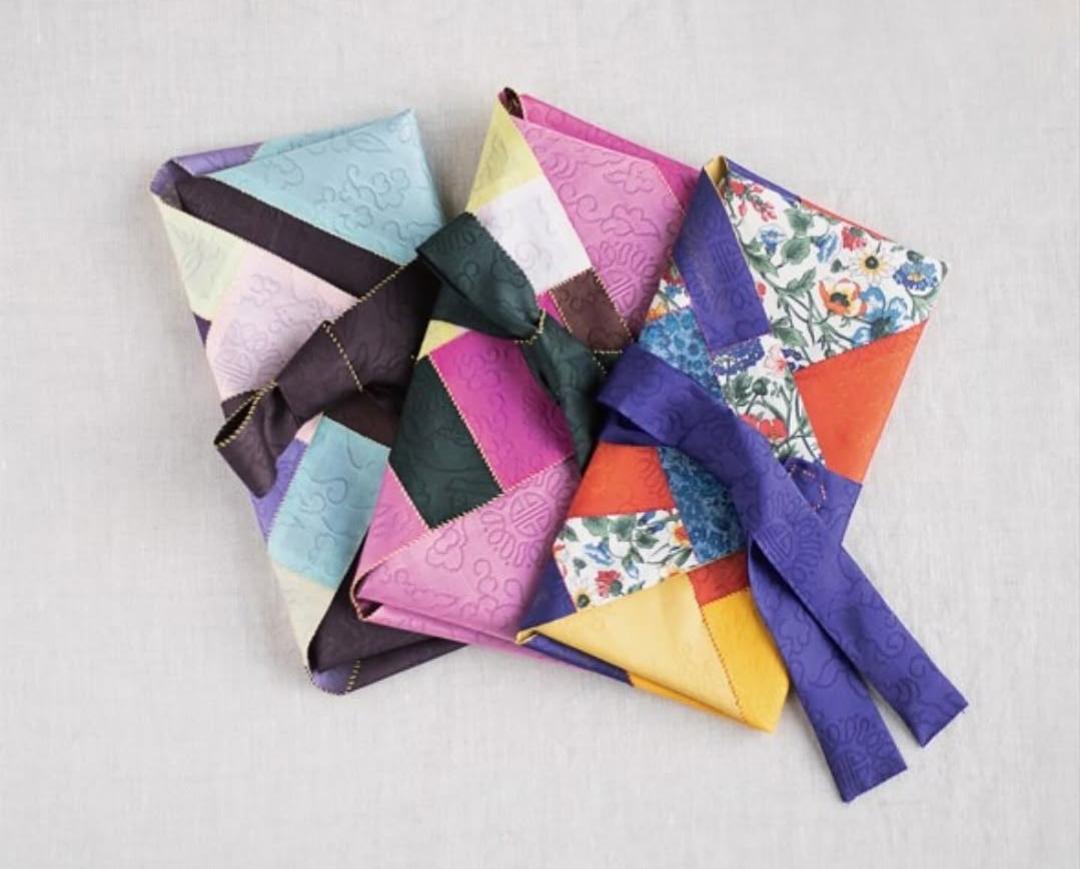
Nature-inspired designs are also prevalent, with motifs like peonies symbolizing wealth, butterflies representing happiness, and cranes signifying longevity. Clouds, the sun and moon, and stars also feature.
In subo, the motifs are more intricate and detailed, often featuring scenes of nature, auspicious symbols like the taegeuk (a yin-yang emblem) and animals such as bats, cranes, tigers, leopards, and carp, or mythical creatures like dragons and phoenixes.
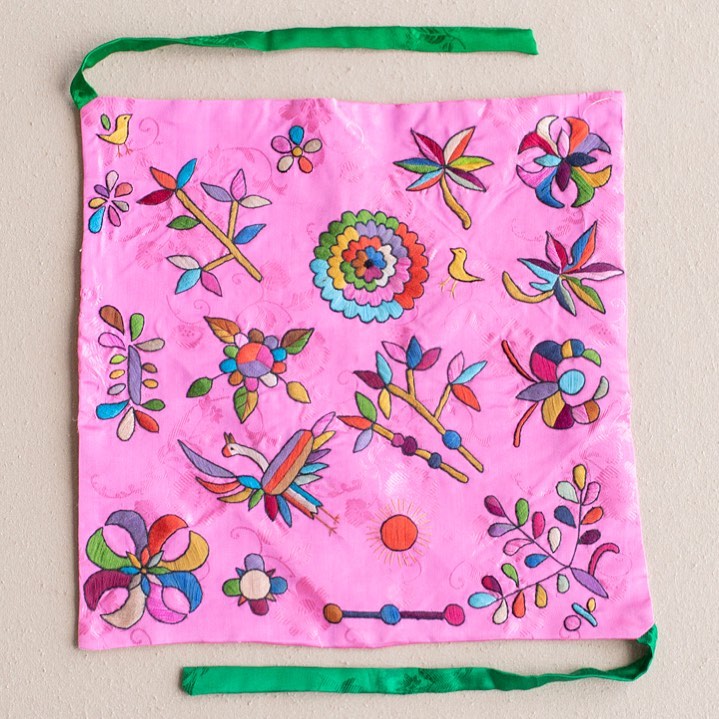
Additionally, color plays a crucial role, with red symbolizing good fortune, blue evoking tranquility, and yellow representing centrality and balance. Commonly used colors in traditional bojagi correspond with the Five Elements of Life, known as obangsaek (blue/wood, red/fire, white/metal, black/water, and yellow/earth). The diversity of motifs and styles in bojagi ensures that each piece is as unique as the maker. These motifs not only enhance the visual appeal but also imbue the cloths with cultural narratives and personal expressions—literally stitching luck and well wishes into each bojagi.
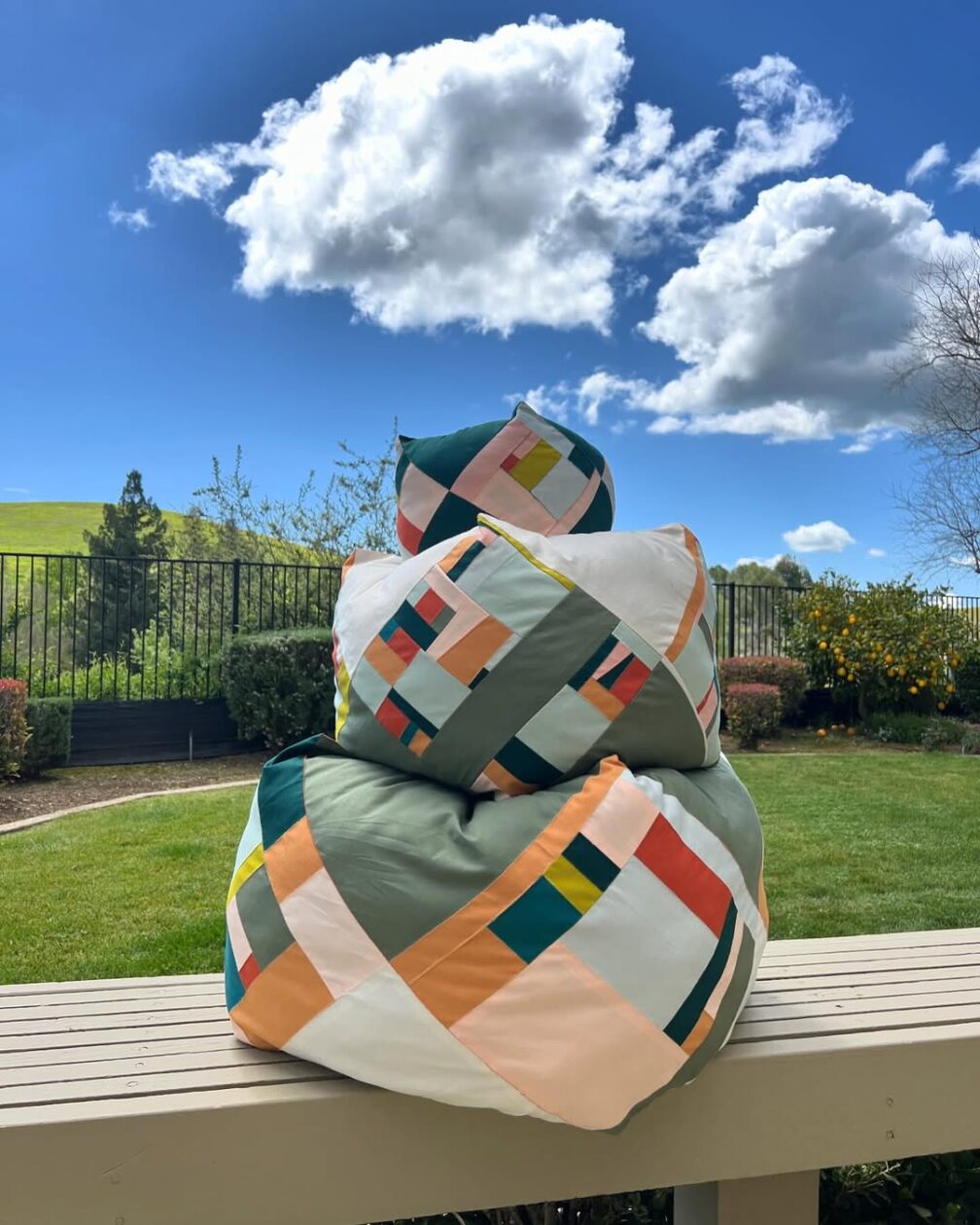
Interested in learning more about bojagi? Read our interview with Youngmin Lee.
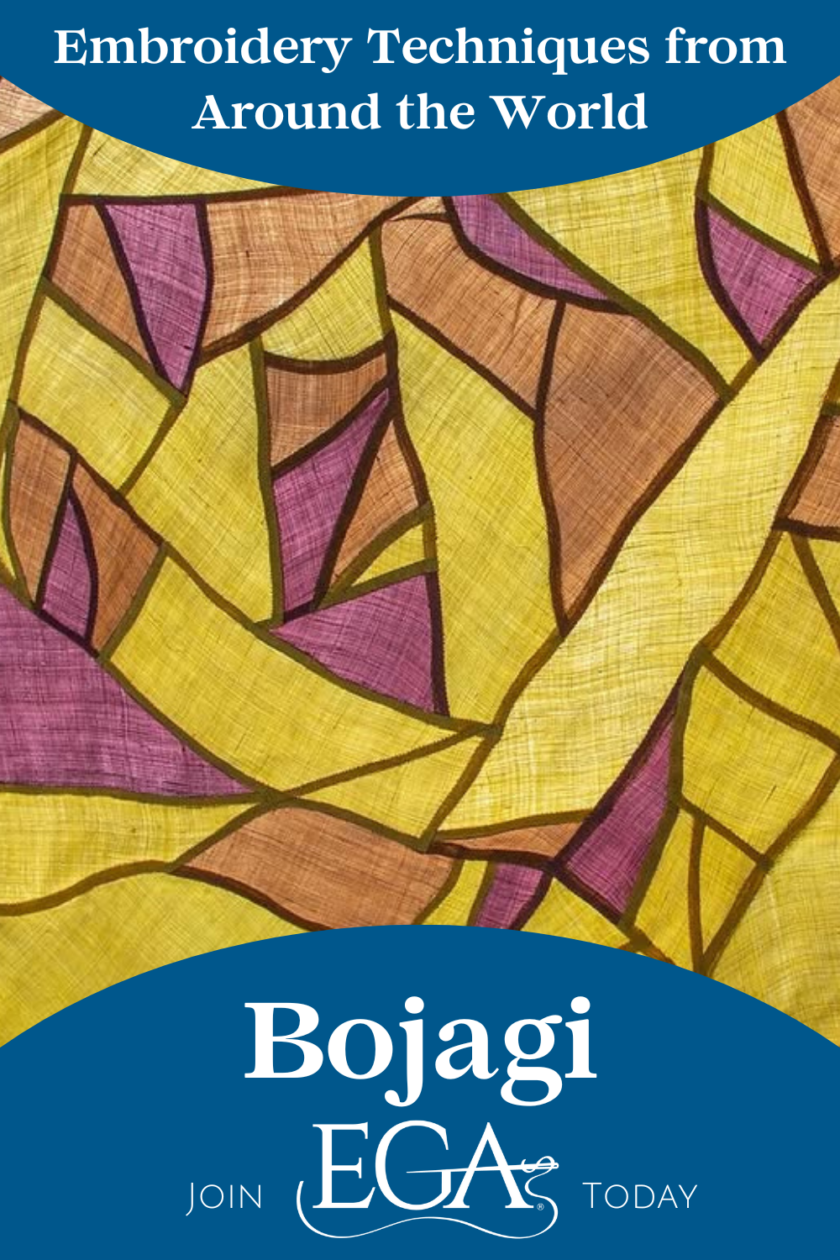
Bojagi. In Wikipedia. https://en.wikipedia.org/wiki/Bojagi
(n.d.). The Ultimate Guide to Bojagi. Cover. Retrieved December 11, 2024, from https://www.cover.earth/uncover/the-ultimate-guide-to-bojagi
EGA (2023, April 19). Interview with Youngmin Lee: Stitching Happiness with Bojagi. Embroiderers’ Guild of America. Retrieved December 11, 2024, from https://egausa.org/interview-youngmin-lee-stitching-happiness-bojagi/
(n.d.). Bojagi. Youngmin Lee. Retrieved December 11, 2024, from http://www.youngminlee.com/bojagi
(n.d.). Jogakbo. Youngmin Lee. Retrieved December 11, 2024, from http://www.youngminlee.com/jogakbo
(n.d.). Subo. Youngmin Lee. Retrieved December 11, 2024, from http://www.youngminlee.com/subo
Korea.net (2021, August 5). Why the traditional wrapping cloth bojagi has enduring appeal. Retrieved December 11, 2024, from https://www.korea.net/NewsFocus/HonoraryReporters/view?articleId=202030
(n.d.). Jogakbo – traditional Korean patchwork. Victoria & Albert Museum. Retrieved December 11, 2024, from https://www.vam.ac.uk/articles/jogakbo-traditional-korean-patchwork
(n.d.). Bojagi Fabric: The Art and Tradition of Bojagi Wrapping. The Korean in Me. Retrieved December 11, 2024, from https://thekoreaninme.com/blogs/hanbok-wear-and-care/bojagi-fabric-the-art-and-tradition-of-bojagi-wrapping/
(2024, January 21). Unwrapping Korea: Exploring Bojagi, the magnificence of Korean culture. Biroso. Retrieved December 11, 2024, from https://biroso.net/blogs/%EB%89%B4%EC%8A%A4/unwrapping-korea-exploring-bojagi-the-magnificence-of-korean-culture
